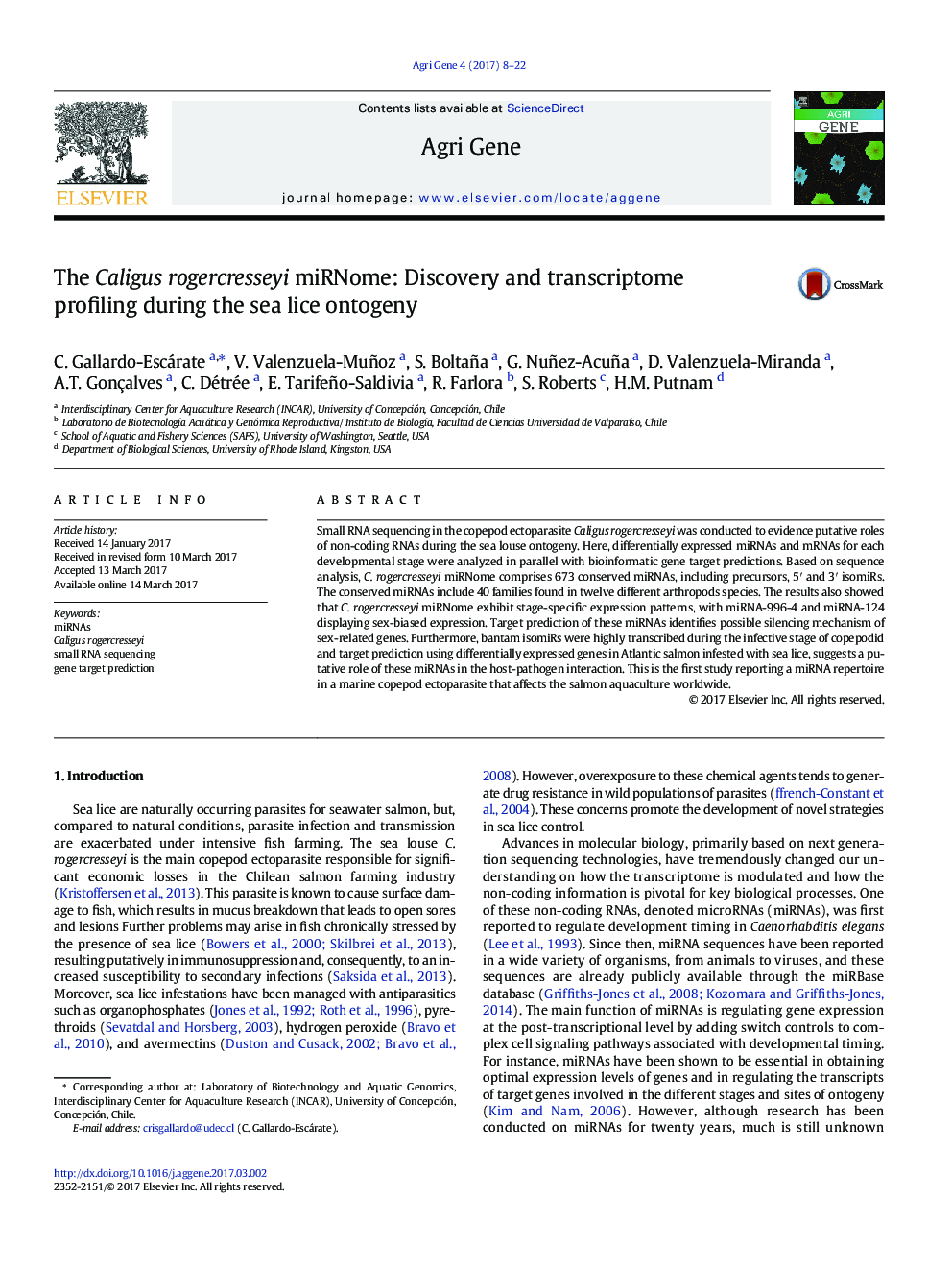| Article ID | Journal | Published Year | Pages | File Type |
|---|---|---|---|---|
| 5588876 | Agri Gene | 2017 | 15 Pages |
Abstract
Small RNA sequencing in the copepod ectoparasite Caligus rogercresseyi was conducted to evidence putative roles of non-coding RNAs during the sea louse ontogeny. Here, differentially expressed miRNAs and mRNAs for each developmental stage were analyzed in parallel with bioinformatic gene target predictions. Based on sequence analysis, C. rogercresseyi miRNome comprises 673 conserved miRNAs, including precursors, 5â² and 3â² isomiRs. The conserved miRNAs include 40 families found in twelve different arthropods species. The results also showed that C. rogercresseyi miRNome exhibit stage-specific expression patterns, with miRNA-996-4 and miRNA-124 displaying sex-biased expression. Target prediction of these miRNAs identifies possible silencing mechanism of sex-related genes. Furthermore, bantam isomiRs were highly transcribed during the infective stage of copepodid and target prediction using differentially expressed genes in Atlantic salmon infested with sea lice, suggests a putative role of these miRNAs in the host-pathogen interaction. This is the first study reporting a miRNA repertoire in a marine copepod ectoparasite that affects the salmon aquaculture worldwide.
Related Topics
Life Sciences
Agricultural and Biological Sciences
Animal Science and Zoology
Authors
C. Gallardo-Escárate, V. Valenzuela-Muñoz, S. Boltaña, G. Nuñez-Acuña, D. Valenzuela-Miranda, A.T. Gonçalves, C. Détrée, E. Tarifeño-Saldivia, R. Farlora, S. Roberts, H.M. Putnam,
